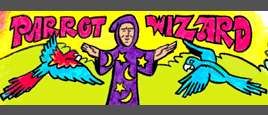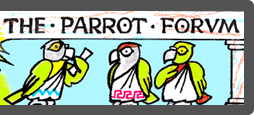Hello dear lovebird lovers.
My guy Rio has a problem. But we don't understand what it this, what caused this or what to do. As seen in the pictures, there is a molted/sparsed/feather-lost area above his wings/shoulders. It started around 6-7 months ago. At first, we thought it was seasonal molting. Then it slowly getting covered up bigger area. And no avian vet in my city.
So, what is that exactly? What to do?
For dear friends who interested, let me give you more details;
We adopted Rio from a family a year ago. He was 6 month old. So now around 1.5 years old. He lives alone. He has a mountain view cage. Minimum twice a day, he flies in the room cage-free, hang out with me and my wife, playful and all. Same and quality complete bird food since day one. Occasionally, vitamin support to his water. He used to close his eyes and singing as the vet called "happy sleep". But he doesn't do that anymore. As in the same time as his feathers start to be like that, he also started to squawking louder and more often. we had to start to cover his cage up for him to be silent during my wife's online lessons. There is nothing else different about his behave and act. Oh, and he never sleeps on the roost/branch at night, he always sleep at the same bottom corner of the cage, since day one.
I'll be grateful if anyone help me about it.



I can't understand what is that and how to treat.
2 posts • Page 1 of 1
- Zuma Dandy
- Parakeet
- Gender:

- Posts: 1
- Number of Birds Owned: 1
- Types of Birds Owned: Fischer's Lovebird
- Flight: Yes
Re: I can't understand what is that and how to treat.
Hi, Zuma, wife and lovebird, welcome to the forum. I am afraid that your little bird is plucking and that always means that the bird is not happy. You say that he has gotten good food from day one but you do not say what this ''complete food' actually is so, please, tell us what -exactly- he eats because I am afraid that despite what the manufacturers claim, there is no 'complete' food for parrots - there isn't even a good commercial one, much less 'complete' so his diet might have something to do with his anxiety/stress/unhappiness. But, most likely, given his age (he is now becoming sexually mature), I would think that the problem is that he is alone. You see, not all parrots are 'companion' parrots, some are 'aviary' parrots and lovebirds are aviary - even when they are handfed. Breeders truly do them a terrible disservice by selling them alone but, then, breeders are not bird lovers because, if they were, they would not sell them. The difference between companion parrots and aviary parrots is the depth of the bond they can achieve with a human. Companion parrots can live with a human and, although they will never be 100% happy, they can have a comfortable, content life with them but aviary parrots can't.
So, my recommendation to you is: make sure you are feeding it right (I feed mine gloop and raw produce for breakfast at dawn and a measured amount of seeds for dinner -in the winter, only a budgie mix but, in the spring and summer, they get half budgie, half small conure without sunflower seeds). Two, make sure it is kept at a strict solar schedule with full exposure to dawn and dusk (they are super opportunistic breeders and you don't want to have an overly hormonal bird) and last but, actually the most important, have it DNAd (you can get the kit online cheaply) and get it a mate of the opposite gender. There is a reason why these birds are called lovebirds in English and inseparables in Spanish, French and Italian, and the reason is that they are INTENSELY pair- oriented. The pairs love one another passionately and are always together, they eat, fly, perch, bathe together, where one goes, the other goes too and when it's time to sleep or for a nap, they perch next to each with their bodies always touching - it is the sweetest thing to watch them...
And not having this 24/7/365 close company does things to their heads. Even handfed birds need the company of another one... I had a little handfed female who was given up because of aggression (I named her Matilda because she was an Australian cinnamon) and, after quarantine, I released her into the birdroom where I had a flock of more than 30 lovies (this was when I was running a rescue) and she took to it like a fish to water! Even got herself a husband and everything (she actually ended up having two husbands). But she never forgot me or stopped loving me and, every morning, when I came into the birdroom, she would fly to my shoulder to give me kisses - even when she was sitting on eggs (fake ones) she would still leave the nest to spend a couple of minutes with me and then return very happily to her 'birdy life'.
So, my recommendation to you is: make sure you are feeding it right (I feed mine gloop and raw produce for breakfast at dawn and a measured amount of seeds for dinner -in the winter, only a budgie mix but, in the spring and summer, they get half budgie, half small conure without sunflower seeds). Two, make sure it is kept at a strict solar schedule with full exposure to dawn and dusk (they are super opportunistic breeders and you don't want to have an overly hormonal bird) and last but, actually the most important, have it DNAd (you can get the kit online cheaply) and get it a mate of the opposite gender. There is a reason why these birds are called lovebirds in English and inseparables in Spanish, French and Italian, and the reason is that they are INTENSELY pair- oriented. The pairs love one another passionately and are always together, they eat, fly, perch, bathe together, where one goes, the other goes too and when it's time to sleep or for a nap, they perch next to each with their bodies always touching - it is the sweetest thing to watch them...
And not having this 24/7/365 close company does things to their heads. Even handfed birds need the company of another one... I had a little handfed female who was given up because of aggression (I named her Matilda because she was an Australian cinnamon) and, after quarantine, I released her into the birdroom where I had a flock of more than 30 lovies (this was when I was running a rescue) and she took to it like a fish to water! Even got herself a husband and everything (she actually ended up having two husbands). But she never forgot me or stopped loving me and, every morning, when I came into the birdroom, she would fly to my shoulder to give me kisses - even when she was sitting on eggs (fake ones) she would still leave the nest to spend a couple of minutes with me and then return very happily to her 'birdy life'.
- Pajarita
- Norwegian Blue
- Gender:

- Posts: 18708
- Location: NW Pa
- Number of Birds Owned: 30
- Types of Birds Owned: RoseBreasted too, CAG, DoubleYellowHead Amazon, BlueFront Amazon, YellowNape Amazon, Senegal, African Redbelly, Quaker, Sun Conure, Nanday, BlackCap Caique, WhiteBelly Caique, PeachFace lovebird, budgies,
- Flight: Yes
2 posts • Page 1 of 1
Who is online
Users browsing this forum: No registered users and 19 guests
